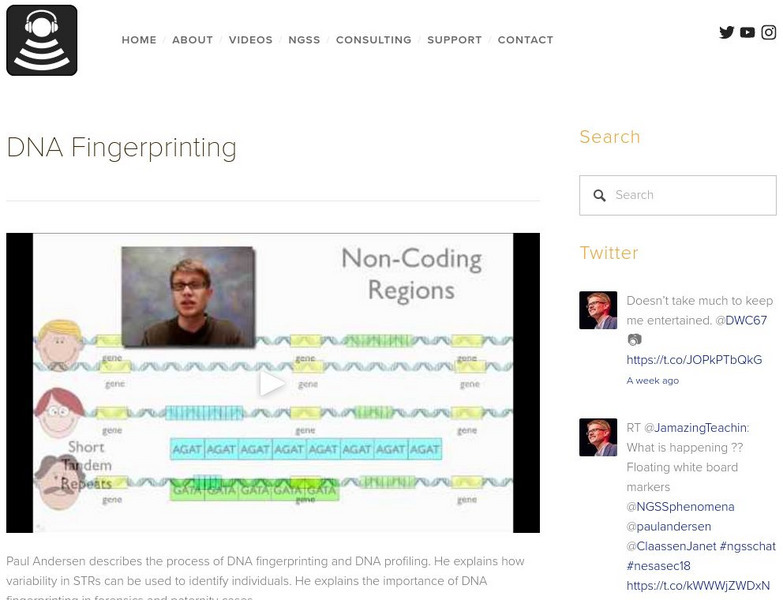Amoeba Sisters
Gel Electrophoresis
Explore electrophoresis with The Amoeba Sisters! This biotechnology video introduces gel electrophoresis and how it functions to separate molecules by size. Expand video details for table of contents. Major Points in Video: Intro 00:00...
Bozeman Science
DNA Fingerprinting
Paul Andersen describes the process of DNA fingerprinting and DNA profiling. He explains how variability in STRs can be used to identify individuals. He explains the importance of DNA fingerprinting in forensics and paternity cases.
Curated Video
Evolution of DNA analysis in Crime Scene Investigation
In this video, we will talk about the evolution of DNA analysis in forensic science. Discover how this groundbreaking technique emerged, revolutionizing criminal investigations. From its humble beginnings to pivotal cases that shaped its...
Curated Video
Can DNA help us solve a crime?
In this video, we explore the incredible world of forensic science and how DNA technology is helping to solve some of the most complex crimes. From the basics of how DNA works, to the cutting-edge techniques used to extract, analyze, and...
Curated Video
Huella Genética - Genética
El genetista Alec Jeffreys de la Universidad de Leicester desarrolló una técnica llamada huella genética en 1985. Permite comparar muestras de ADN de diferentes personas para encontrar similitudes y diferencias. Es útil para resolver...
FuseSchool
DNA Fingerprinting
CREDITS Animation & Design: Waldi Apollis Narration: Dale Bennett Script: Bethan Parry & Helen Stamp What is DNA fingerprinting or DNA profiling? Leicester University geneticist Alec Jeffreys developed a technique called DNA...
PBS
What Is Race?
Geneticist David Altshuler discusses the results of his 1000 Genome Project and his research that shows that people across the world share 90% of the same DNA, that race, as it is thought of today, is a 19th century social historical...
TED-Ed
How Bones Make Blood
Bones are blood cell factories. Viewers learn all about bone marrow and how blood cells produced in the marrow of a donor can be grafted into a cancer patient to fight the disease.
Bozeman Science
DNA Fingerprinting
The chances of a DNA mismatch occurring in DNA fingerprinting is one in a billion. Here learners see how using the differences in people's DNA, specifically Short Tandem Repeats (STRs), cutting them out using restriction enzymes, and...
Massachusetts Institute of Technology
Mit: Blossoms: The Case of the Stolen Painting: A Forensic Mystery
Investigate plant pollen dispersal methods through a forensic science investigation. In addition, students learn to communicate their investigation results to non-scientific audiences. [28:01]
Massachusetts Institute of Technology
Mit: Blossoms: Using Dna to Identify People
This lesson focuses on the molecular biology technique of DNA fingerprinting: what it is, how it works, and how the data from these experiments are used for paternity testing and forensics. [45:48]
Massachusetts Institute of Technology
Mit: Blossoms: The Olive Propagation Problem
In this video lesson, students will learn about the DNA fingerprinting of plants by studying the following real world problem: A farmer bought olive trees of the variety called "nabali", known for producing high amounts of oil. However,...
Science Friday Initiative
Science Friday: A New Human Relative, From a Dna Sample?
Genetic analysis of DNA from a single prehistoric finger bone may point to a new branch of the human family tree.
Bozeman Science
Bozeman Science: Dna Fingerprinting
Paul Andersen describes the process of DNA fingerprinting and DNA profiling. He explains how variability in STRs can be used to identify individuals. He explains the importance of DNA fingerprinting in forensics and paternity cases.








